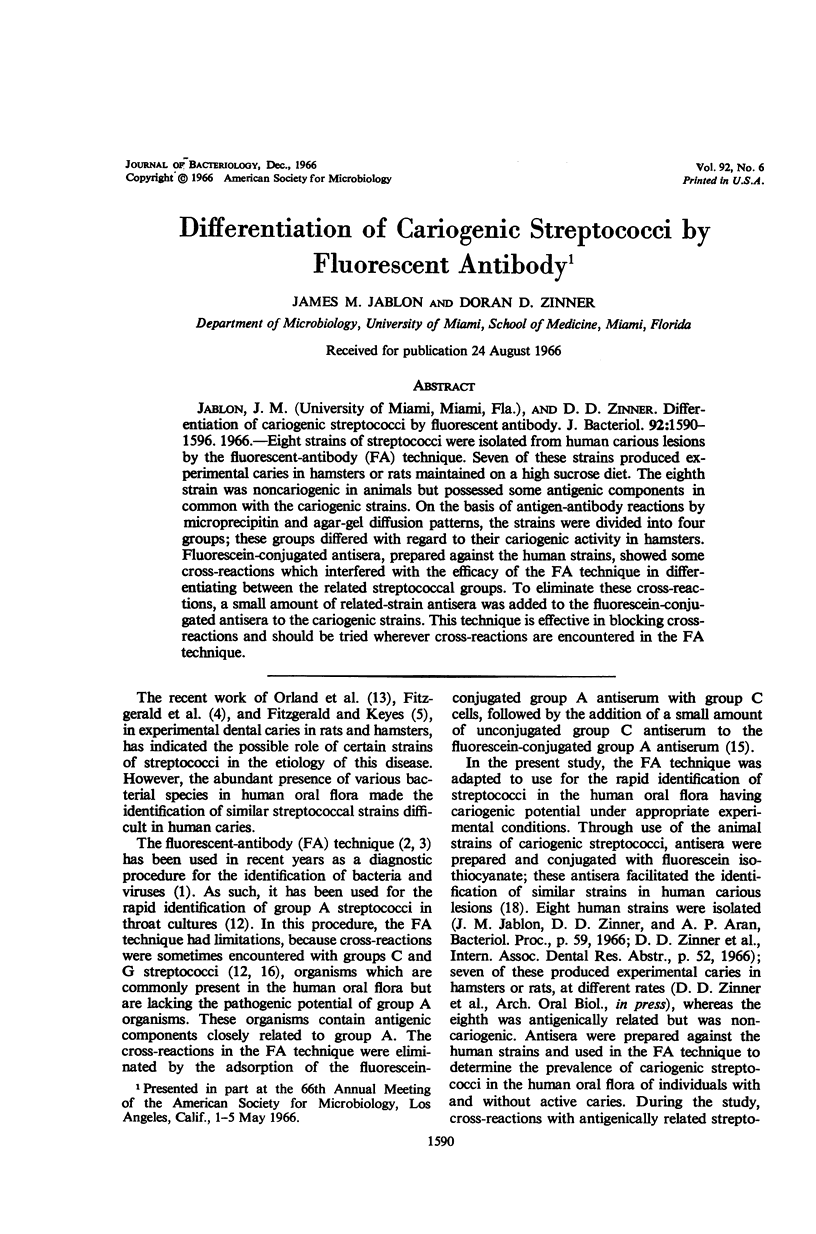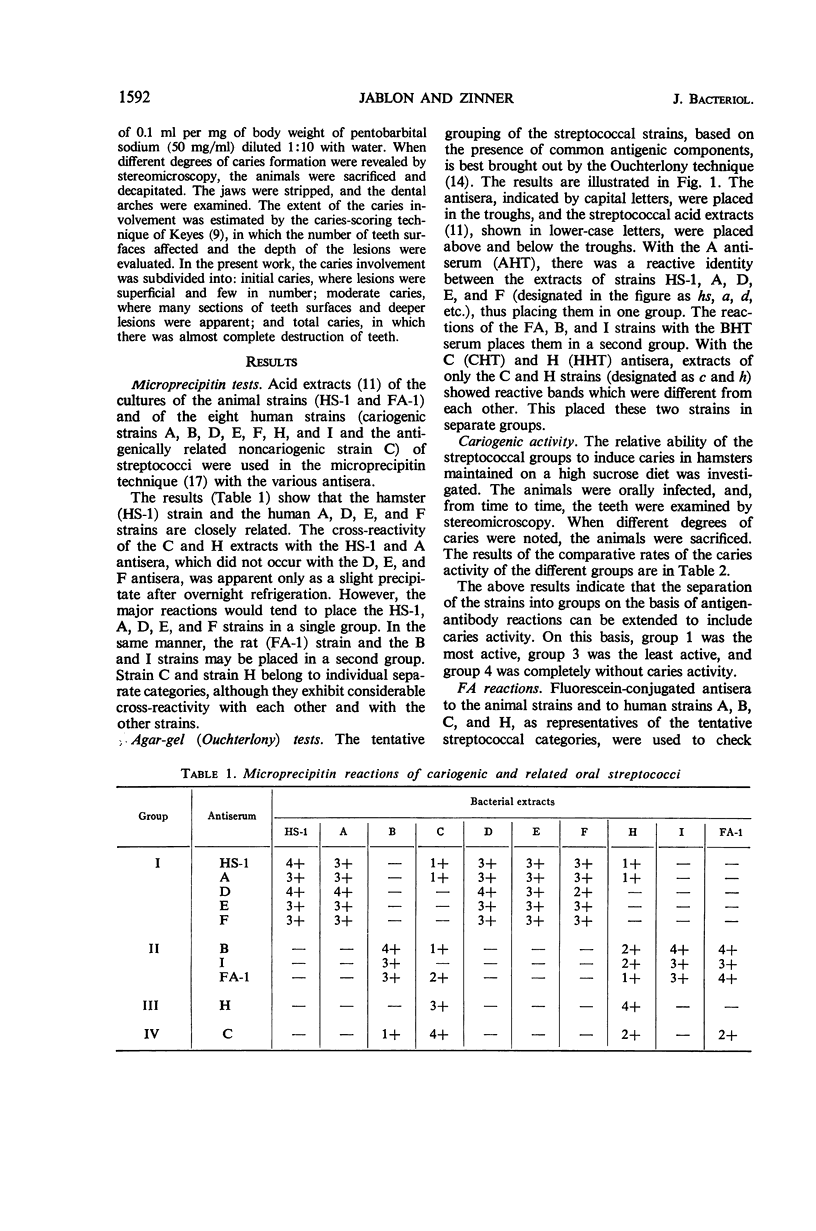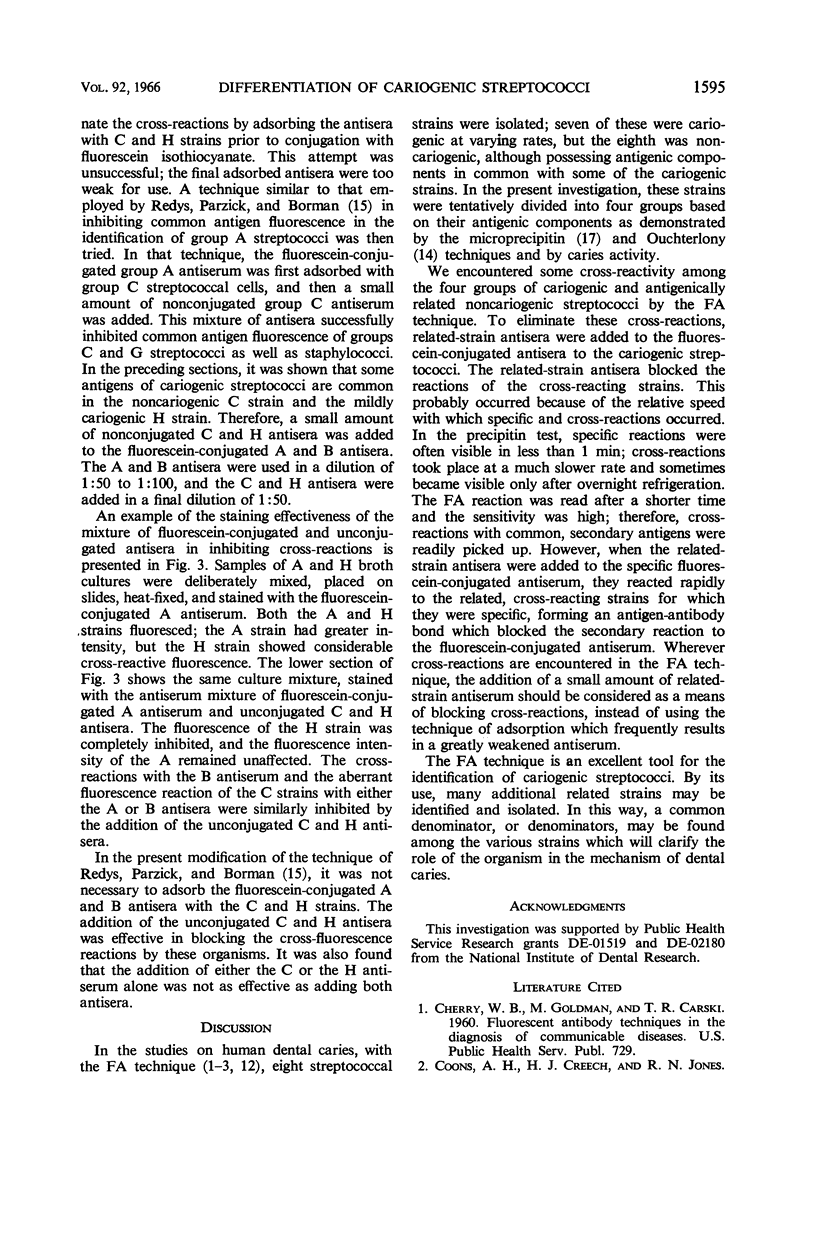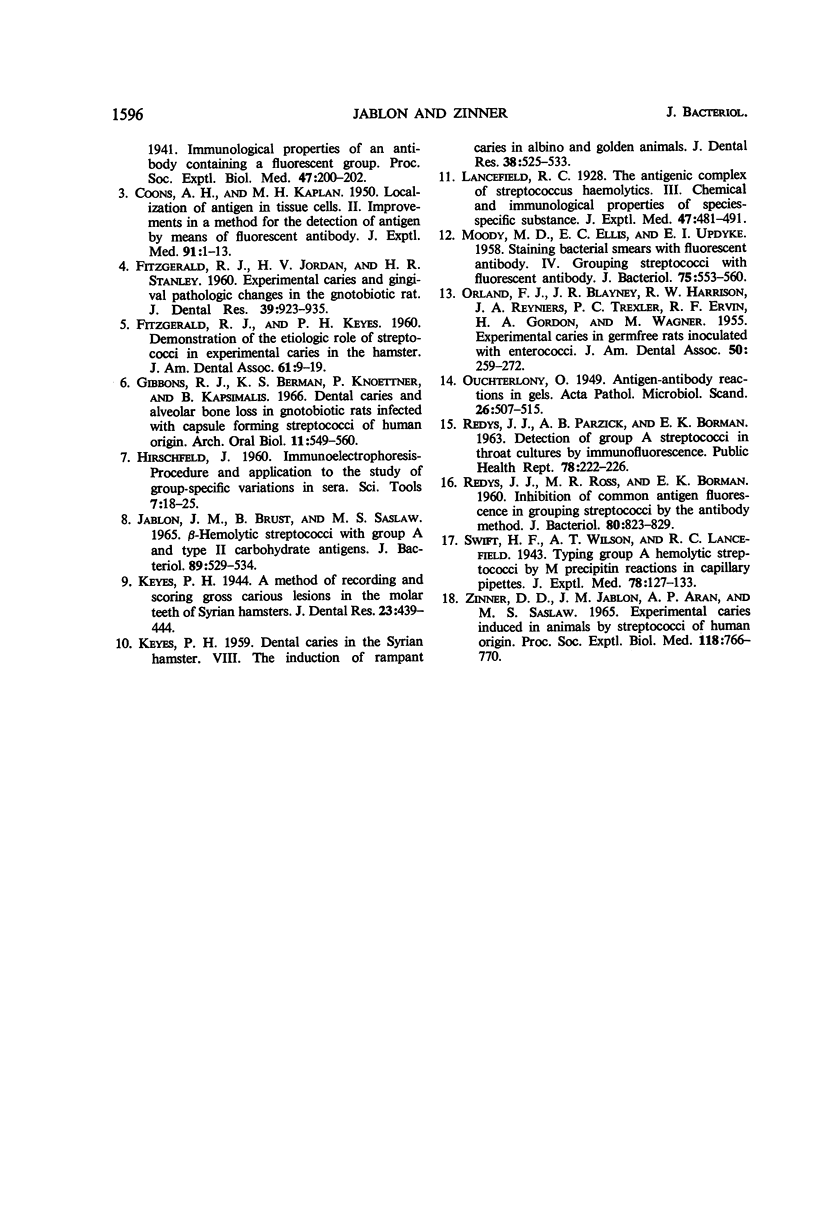Abstract
Jablon, J. M. (University of Miami, Miami, Fla.), and D. D. Zinner. Differentiation of cariogenic streptococci by fluorescent antibody. J. Bacteriol. 92:1590–1596. 1966.—Eight strains of streptococci were isolated from human carious lesions by the fluorescent-antibody (FA) technique. Seven of these strains produced experimental caries in hamsters or rats maintained on a high sucrose diet. The eighth strain was noncariogenic in animals but possessed some antigenic components in common with the cariogenic strains. On the basis of antigen-antibody reactions by microprecipitin and agar-gel diffusion patterns, the strains were divided into four groups; these groups differed with regard to their cariogenic activity in hamsters. Fluorescein-conjugated antisera, prepared against the human strains, showed some cross-reactions which interfered with the efficacy of the FA technique in differentiating between the related streptococcal groups. To eliminate these cross-reactions, a small amount of related-strain antisera was added to the fluorescein-conjugated antisera to the cariogenic strains. This technique is effective in blocking cross-reactions and should be tried wherever cross-reactions are encountered in the FA technique.
Full text
PDF






Images in this article
Selected References
These references are in PubMed. This may not be the complete list of references from this article.
- COONS A. H., KAPLAN M. H. Localization of antigen in tissue cells; improvements in a method for the detection of antigen by means of fluorescent antibody. J Exp Med. 1950 Jan 1;91(1):1–13. doi: 10.1084/jem.91.1.1. [DOI] [PMC free article] [PubMed] [Google Scholar]
- FITZGERALD R. J., JORDAN H. V., STANLEY H. R. Experimental caries and gingival pathologic changes in the gnotobiotic rat. J Dent Res. 1960 Sep-Oct;39:923–935. doi: 10.1177/00220345600390052701. [DOI] [PubMed] [Google Scholar]
- FITZGERALD R. J., KEYES P. H. Demonstration of the etiologic role of streptococci in experimental caries in the hamster. J Am Dent Assoc. 1960 Jul;61:9–19. doi: 10.14219/jada.archive.1960.0138. [DOI] [PubMed] [Google Scholar]
- Gibbons R. J., Berman K. S., Knoettner P., Kapsimalis B. Dental caries and alveolar bone loss in gnotobiotic rats infected with capsule forming streptococci of human origin. Arch Oral Biol. 1966 Jun;11(6):549–560. doi: 10.1016/0003-9969(66)90220-2. [DOI] [PubMed] [Google Scholar]
- JABLON J. M., BRUST B., SASLAW M. S. BETA-HEMOLYTIC STREPTOCOCCI WITH GROUP A AND TYPE II CARBOHYDRATE ANTIGENS. J Bacteriol. 1965 Feb;89:529–534. doi: 10.1128/jb.89.2.529-534.1965. [DOI] [PMC free article] [PubMed] [Google Scholar]
- KEYES P. H. Dental caries in the Syrian bamster. VIII. The induction of rampant caries activity in albino and golden animals. J Dent Res. 1959 May-Jun;38(3):525–533. doi: 10.1177/00220345590380031401. [DOI] [PubMed] [Google Scholar]
- MOODY M. D., ELLIS E. C., UPDYKE E. L. Staining bacterial smears with fluorescent antibody. IV. Grouping streptococci with fluorescent antibody. J Bacteriol. 1958 May;75(5):553–560. doi: 10.1128/jb.75.5.553-560.1958. [DOI] [PMC free article] [PubMed] [Google Scholar]
- ORLAND F. J., BLAYNEY J. R., HARRISON R. W., REYNIERS J. A., TREXLER P. C., ERVIN R. F., GORDON H. A., WAGNER M. Experimental caries in germfree rats inoculated with enterococci. J Am Dent Assoc. 1955 Mar;50(3):259–272. doi: 10.14219/jada.archive.1955.0061. [DOI] [PubMed] [Google Scholar]
- REDYS J. J., PARZICK A. B., BORMAN E. K. Detection of group A streptococci in throat cultures by immunofluorescence. Public Health Rep. 1963 Mar;78:222–226. [PMC free article] [PubMed] [Google Scholar]
- REDYS J. J., ROSS M. R., BORMAN E. K. Inhibition of commonantigen fluorescence in grouping streptococci by the fluorescent antibody method. J Bacteriol. 1960 Dec;80:823–829. doi: 10.1128/jb.80.6.823-829.1960. [DOI] [PMC free article] [PubMed] [Google Scholar]
- ZINNER D. D., JABLON J. M., ARAN A. P., SASLAW M. S. EXPERIMENTAL CARIES INDUCED IN ANIMALS BY STREPTOCOCCI OF HUMAN ORIGIN. Proc Soc Exp Biol Med. 1965 Mar;118:766–770. doi: 10.3181/00379727-118-29964. [DOI] [PubMed] [Google Scholar]





